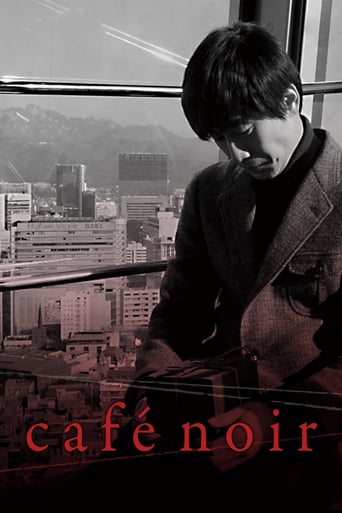sitenoise
*Cafe Noir* is a linear quilt of set pieces and cinematic indulgences, vignette style. There are more than a half dozen scenes you could call music videos, gorgeous music videos with great music: Bach chorales, Korean indie funky dub, opera, Chinese avant-garde. The whole film is melancholy and these "music videos" barely raise its temperature. Except maybe the dance number near the end to the middle eastern grooves of Bill Laswell. Dance number? The film is based on stories by Goethe and Dostoevsky. Most of the dialog is literary if not poetic. Beyond the inspirations and homages to great works of art, Cafe Noir is also steeped in gobs of Kim Ki-dukian religiosity, and the academic musings on love of Hong Sang-soo, with plenty of nods to contemporary Korean cinema thrown in. There's a scene by the Han river where the uncle of the little girl who was killed in *The Host* talks about his feelings of loss. So Meta. The forlorn star of the second half is Hong regular Jung Yu-Mi. A scene where she says "fork you, like you know it all!" will have Hong fans howling.Viewers of the film familiar with Goethe, Dostoevsky and Classic Film auteurs will have a different (and probably richer) experience of the film than I did. All that was lost on me (except for some red balloons).Cafe Noir is gorgeous.Cafe Noir is pretentious. It's grandiose and overwhelming. It's punishingly thick and multi-layered. It's over three hours long and languidly paced. Characters in the film don't talk to one another the way normal people do, they deliver lines. Ten year old girls quote Goethe and pontificate about love with more wisdom than I'll ever possess.Cafe Noir is the most amazing film experience I've had in years.
alan fair
A diptych proclaiming its sources as Goethe and Dostoevsky, two writers, here at least, divided by colour and monochrome respectively. The film opens with a wonderful medium close up of a young woman/girl, eating a double cheeseburger. The shot is held for the entirety of the process, the young girl is sanctified by the neon world in which she is standing. This shot had me, after seeing a lot of very ordinary films that week, in rapture. The clarity of the cinematography and the audacity to engage me in what is a very long film (197 minutes), in fact its length may in fact be its genius. The first half in glorious colour, examining the nature of thwarted desire, the second half in magnificent monochrome dealing with thwarted desire. A film packed with beautiful images and intriguing juxtapositions offers the viewer a re-view of Christian iconography as striking as renaissance painting, the delight as we follow characters both enigmatic and engaging is eventually turned into a duet of spectator and spectacle with a soundtrack dancing around the pas de deux. From the family romance as critique of melodrama (Sirk, anyone?) to the restless journey to the end of the night, the film demands attention.



